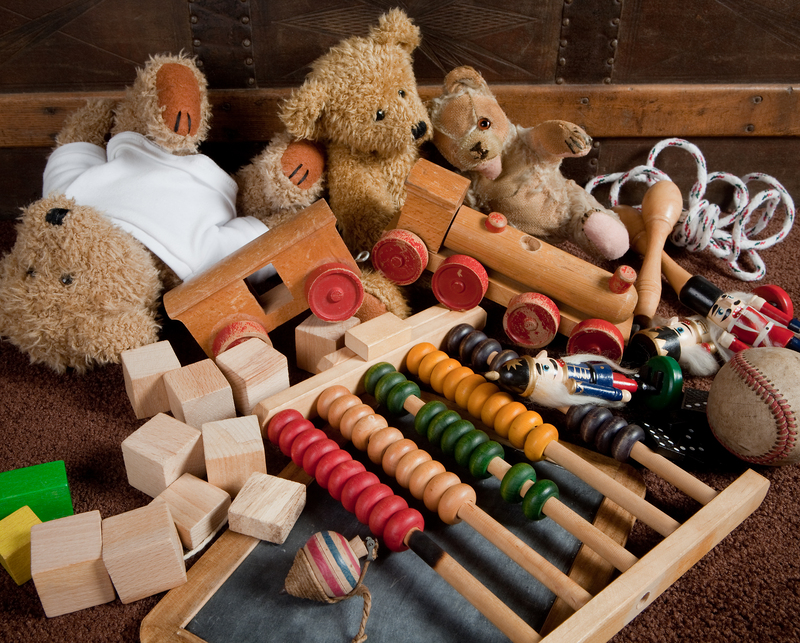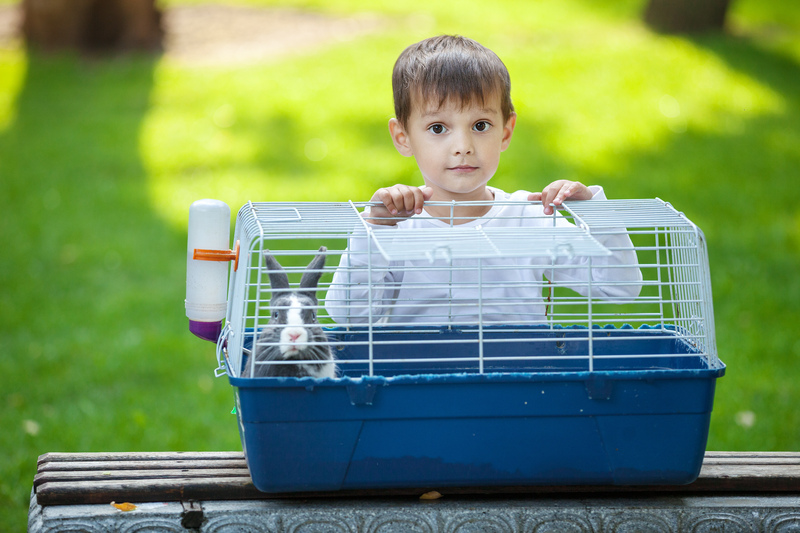Efficient Packing Hacks for Your Next House Move
Posted on 30/05/2025
Efficient Packing Hacks for Your Next House Move
Moving to a new house can be an exciting new chapter, but it can also be quite overwhelming. One of the most challenging aspects is efficiently packing your belongings to ensure a smooth and organized move. Whether you are moving across town or to a new city, mastering the art of efficient house move packing will save you time, money, and energy. In this guide, we'll cover proven packing hacks and tips to make your move efficient and manageable.

Packing Strategies for a Smooth House Move
The key to a successful move is planning and organization. Before you begin tossing items into boxes, take a strategic approach with these essential packing strategies:
- Start Early: Don't wait until the last minute. Begin packing as soon as you know you are moving.
- Declutter Before You Pack: Sort through your belongings and decide what to donate, sell, recycle, or throw away.
- Gather Quality Packing Supplies: Invest in sturdy boxes, bubble wrap, packing paper, tape, and labels for efficient packing.
- Create a Packing Timeline: Break down the process room by room and assign a schedule to keep yourself on track.
Decluttering: The Essential Pre-Packing Step
Efficient packing begins with decluttering. Not only does it reduce moving costs and the number of boxes you'll need, but it also makes unpacking in your new home much simpler.
- Adopt the "Keep, Donate, Discard" Method: Go through each room and categorize items accordingly.
- Host a Garage Sale: Lighten your load and earn some extra cash by selling items you no longer need.
- Be Ruthless: If you haven't used something in over a year, consider letting it go.
Essential Packing Hacks for Efficient Moving
1. Use What You Already Have
Before you spend on new packing supplies, utilize items around your home. Suitcases, duffel bags, laundry baskets, and even dresser drawers can double as moving containers. Use towels, sheets, and clothing to wrap and cushion fragile items, trimming costs and reducing waste.
2. Color Code and Label Everything
House move efficiency is all about organization. Assign a color to each room and use colored tape or markers on boxes for visual identification. Label each box with its contents and destination room. Details like "Kitchen - Pots & Pans" make a big difference when unpacking.
- Pro Tip: Number your boxes and keep a digital or paper inventory to quickly locate items.
3. Pack an Essentials Box
For maximum efficiency while moving, set aside an "essentials box" with items you'll need right away. This can include toiletries, a change of clothes, basic kitchenware, phone chargers, medications, important documents, and snacks. Keep this box accessible during your move.
4. Use Smaller Boxes for Heavy Items
Books, tools, and cookware can quickly become too heavy in large boxes. Pack heavy objects in smaller boxes to prevent injuries, protect your possessions, and ensure easier lifting and stacking.
5. Protect Fragile Items With Smart Hacks
Keep glassware, dishes, and electronics safe with a few clever packing tricks:
- Layer Plates Vertically: They're less likely to break when packed this way, similar to stacking vinyl records.
- Wrap Glasses in Socks: This provides extra padding and saves space.
- Use Bubble Wrap and Towels Together: Double protection for your most delicate items.
6. Maximize Space Like a Pro
Smart, space-saving hacks can make a huge difference in your house move packing efficiency:
- Fill every gap: Place small items like spices and utensils inside pots and containers.
- Roll clothes instead of folding: This saves space and reduces wrinkles.
- Disassemble when possible: Take apart large furniture and keep hardware in labeled plastic bags taped to each item.
7. Take Photos to Remember Setups
Before disconnecting electronics or disassembling furniture, take photos on your phone. This hack ensures you'll easily reconnect cords or reassemble items in your new home.
8. Secure Liquids to Prevent Spills
Tape the lids of shampoos, soaps, and cleaning products, or place plastic wrap under the cap before screwing it back on. Pack all liquids in sealed plastic bags to protect other items from possible leaks during your house move.
9. Keep Clothes on Their Hangers
Save time by using garbage bags or wardrobe boxes. Slide a garbage bag hole over a cluster of hanging clothes and tie at the bottom, or hang them directly in wardrobe boxes for easy transfer and unpacking.
10. Use Technology for Organization
Apps can help you manage your packing checklist, inventory your boxes, and even plan the layout for your new home. Some popular options for efficient packing include Sortly, Moving Van, and Google Keep.
Supplies: What You Need for Efficient Packing
Must-Have Packing Items
- Assorted cardboard boxes (small, medium, large, specialty)
- Packing tape and tape gun
- Bubble wrap/packing paper
- Markers, labels, or colored tape
- Stretch wrap for large items
- Zip-top plastic bags
- Scissors and box cutters
- Plastic bins for valuables or weatherproof storage
Environmentally Friendly Alternatives
If you're concerned about the environmental impact of your move, consider these green options:
- Rent reusable plastic bins instead of buying new cardboard boxes.
- Use old newspapers or recyclable brown paper for wrapping.
- Repurpose containers and baskets you already own.
Packing Room by Room: Tips for an Organized Move
Kitchen
- Start with rarely used appliances and dishes.
- Stack pots and pans together, placing small utensils or spices inside to save space.
- Wrap knives in dish towels and secure with a rubber band for safety.
Living Room
- Take photos of electronics cable setups.
- Pack TV remotes and cords in labeled baggies.
- Dismantle bookshelves if possible and pack books in small, sturdy boxes.
Bedrooms
- Pack off-season clothing first.
- Keep clothes on hangers and use bags or wardrobe boxes.
- Protect mattresses with special covers or plastic sheets.
Bathroom
- Reduce liquids to what you need for your essentials box.
- Seal and bag toiletries to prevent spills.
- Pack towels and linens last as they can double as padding.
Garage and Outdoors
- Dispose of hazardous chemicals responsibly; moving companies often won't transport them.
- Bundle tools together and secure sharp edges with bubble wrap or old blankets.
- Drain fuel from lawn mowers and other equipment.
Moving Hacks for an Efficient Unpack
Your packing strategy shouldn't end once everything is boxed up. Being intentional about how you pack will set you up for quick and easy unpacking at your new place.
- Stack boxes by room as you unload them; follow your color-coded or labeled system.
- Assemble furniture first so you have a place to put away items quickly.
- Unpack essential boxes right away, then move room by room according to your inventory.
- Recycle or donate packing materials after you finish unpacking to keep your new home clutter free.
Bonus: Top 5 Things People Forget When Moving Home
- Important documents and medical records (keep these with you)
- Valuables or sentimental items tucked away in unexpected places
- Updating your address with banks, utilities, and subscriptions
- Prescription medications
- Charging cables, remotes, and keys

Frequently Asked Questions on Packing for a House Move
How soon should I start packing for my house move?
Begin packing non-essential items as soon as you have your move date. Most experts recommend starting at least three to four weeks before your moving day for optimal efficiency.
What is the most efficient way to pack clothes?
Keep clothes on hangers and cover with garbage bags or use wardrobe boxes for a quick transfer. Rolling clothes can also maximize space and prevent wrinkles.
How do I protect fragile items when moving?
Wrap each item individually with bubble wrap, towels, or packing paper. Fill all empty spaces in the box to prevent movement. Label the box as "Fragile" and stack it on top of heavier items.
Should I hire professional packers or do it myself?
This depends on your budget and timeline. Professional packers can save time and provide expert care for delicate items, but self-packing gives you more control and can reduce costs.
What should I do with hazardous materials?
Dispose of paints, chemicals, and flammables safely at local collection centers. Most moving companies won't transport these items due to safety regulations.
Conclusion: Make Your Next House Move a Breeze
An efficient house move begins long before moving day. With these packing hacks and pro tips, you can streamline the entire process, protect your belongings, and significantly reduce stress. Remember, organization is your best ally: declutter ruthlessly, pack effectively, and unload strategically to settle in quickly at your new home.
Looking for more advice on efficient packing for your house move or professional movers? Stay tuned for more expert moving content to make your next journey a success!





